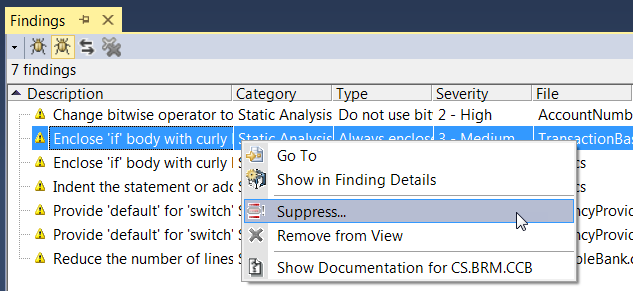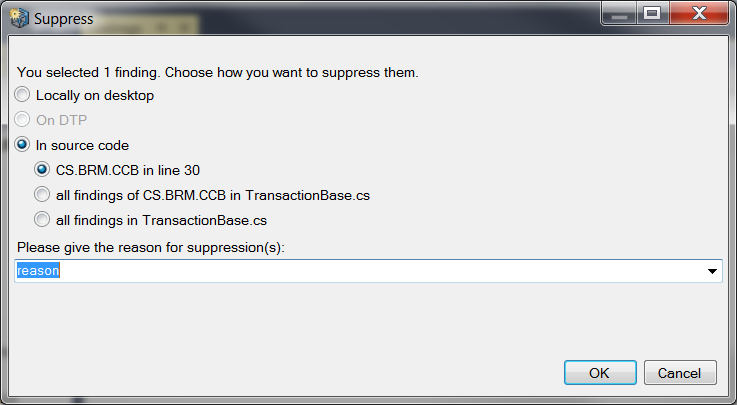...
| Table of Contents | ||
|---|---|---|
|
Suppressing Findings in the IDE
...
Right-click on a single finding or a group of selected findings and choose Suppress from the menu.
Enter a reason for suppressing the finding and choose where the suppression will be stored.
You can select one of the following storage options:
- Locally on desktop - The suppressions will be stored in your workspace or solution and used only during local analysis runs. If you select this option, it will suppress all occurrences of the selected finding in the file (the number of occurrences will be displayed in the dialog box).You can configure the custom location for storing local suppression with the suppression.local.dir option; see Configuration in Automation User Guide for details.
- On DTP- The suppressions will be stored on DTP and shared with the team. You can suppress only findings that are already registered on DTP.
- In source code - The findings will be suppressed in code and shared across the team when checked in your source control system.
Info icon false title Suppressing Findings on DTP - The On DTP option is available only for findings that are already registered on DTP.
- Findings are suppressed in the subsequent analysis run.
- Click OK to complete the suppression.
Reviewing Suppressions
You can review suppressed findings and unsuppress the findings that have been saved locally on desktop.
...
Manually Suppressing Findings in Source Code
To define dotTEST suppressions directly in the C# and VB.NET source code:
...
Save the modified code.
For example:
| Code Block |
|---|
private void eventMove(object o, EventArgs e)
{
Move(+1); // parasoft-suppress CS.PUO
} |
...
You can suppress the reporting of findings directly in your source code. See Suppressing the Reporting of Findings for information about the syntax for defining suppression schemes.

